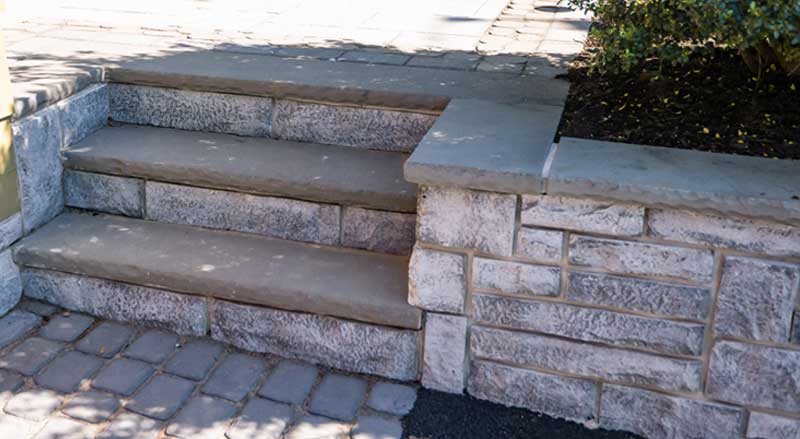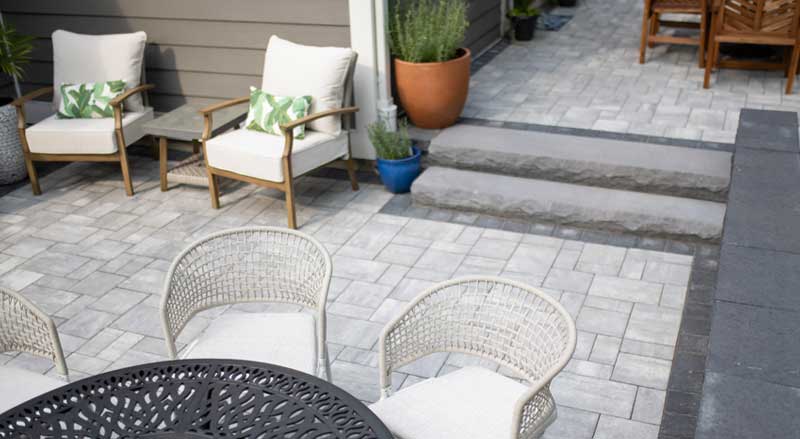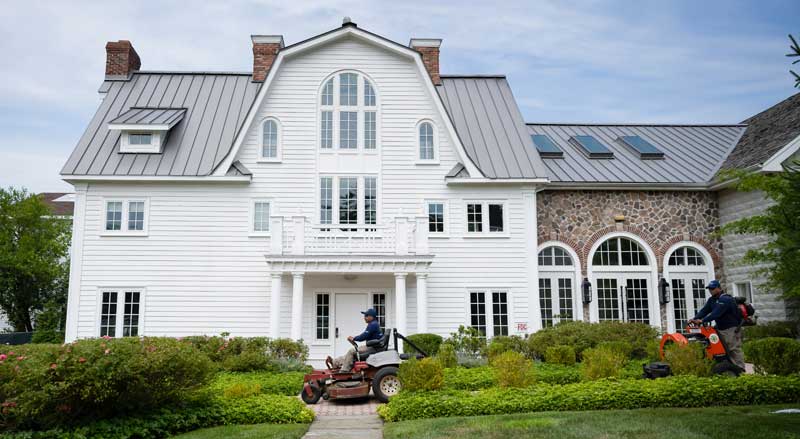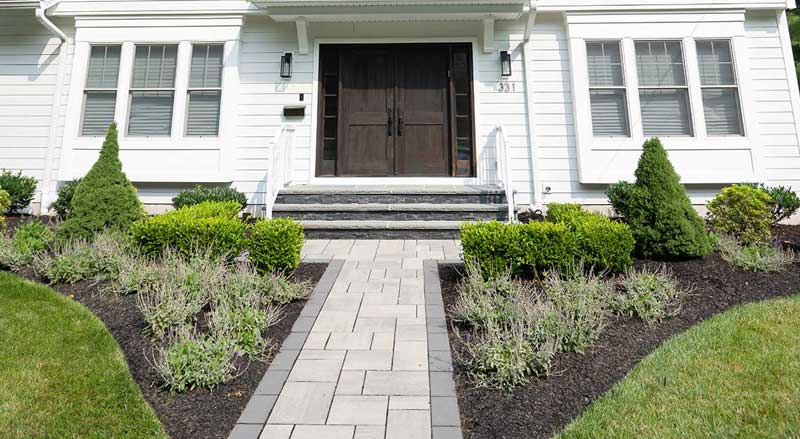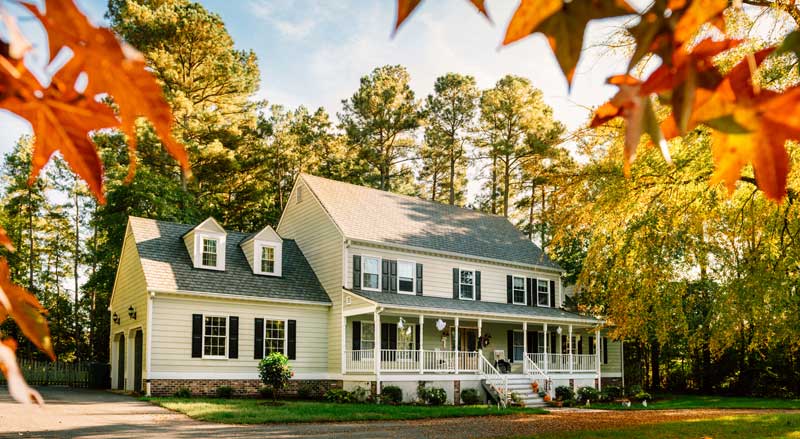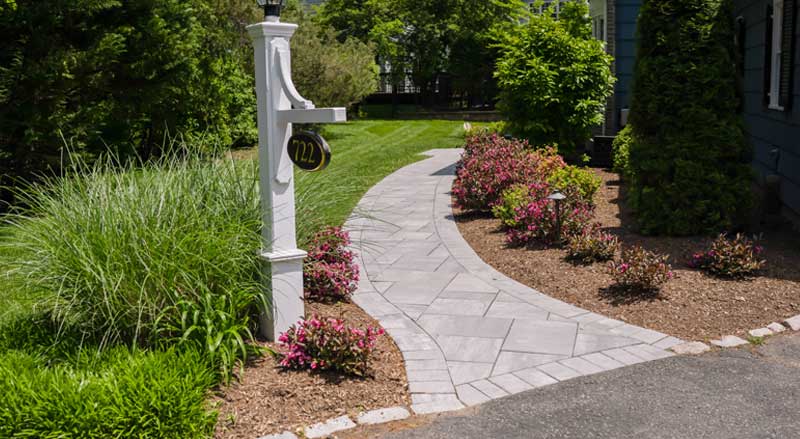Landscape retaining walls are structures designed to hold back soil and prevent erosion in outdoor spaces.
They are commonly used to create level areas for planting, gardening, or outdoor living spaces on sloping or uneven terrain.
Retaining walls can also enhance the aesthetic appeal of a landscape by creating visually interesting and functional features.
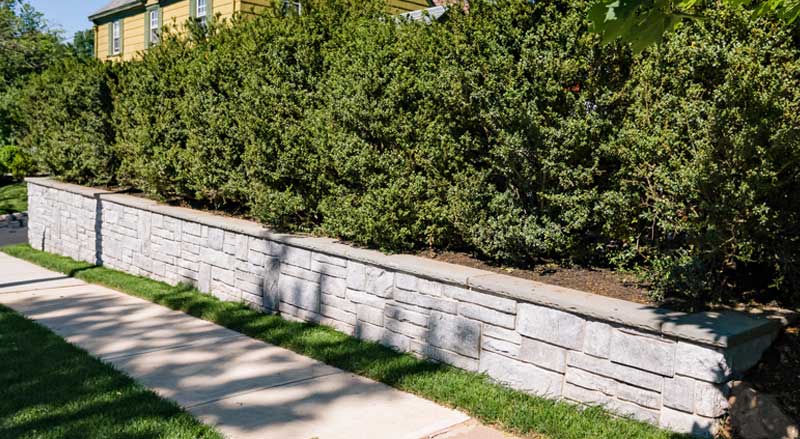
There are different types of retaining walls that can be used in landscaping, including gravity walls, cantilever walls, and reinforced walls.
Gravity walls rely on their weight and mass to resist soil pressure, while cantilever walls use a reinforced concrete footing and a horizontal slab to support the weight of the soil.
Reinforced walls use a combination of reinforcing materials and concrete to provide additional strength and stability.
Why do we use retaining walls?
Retaining walls are a great way to create an interesting and beautiful transition in landscape elevation.
For example, if you have a steep or hilly area in your yard, you can build a series of terraces or tiers to gradually handle an otherwise steep transition.
Think of these terraces as large steps, that can incorporate lawn or turf areas, flowers or planting beds, and even incorporate dramatic lighting.
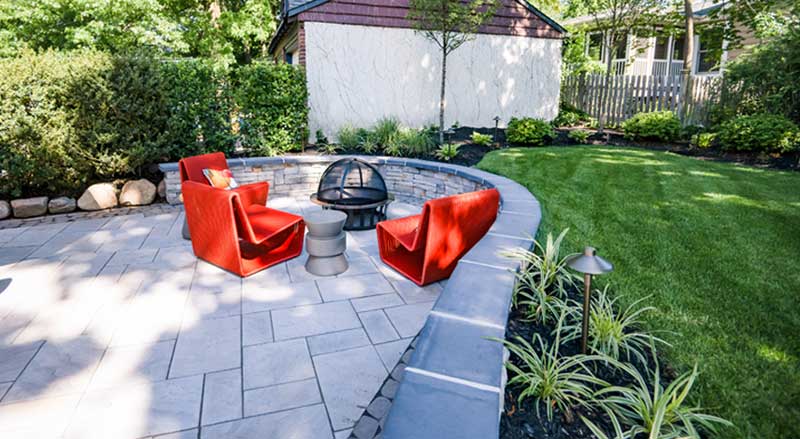
Retaining walls are used for several reasons, including:
1. Soil Retention: Retaining walls are primarily used to hold back or retain soil and prevent it from sliding or eroding due to gravity or other natural forces. They are especially useful in hilly or sloping terrain where soil erosion and landslides can be a common problem.
2. Erosion Control: Retaining walls can also be used to control erosion caused by water runoff, which can cause soil loss and damage to structures and landscapes.
3. Increased Usable Space: Retaining walls can be used to create more usable space on a sloping site by leveling the ground and providing flat surfaces for planting, building structures, or other uses.
4. Aesthetics: Retaining walls can be used to create level areas for landscaping or for creating outdoor living spaces such as patios, decks, or terraces. They can also be used to enhance the aesthetics of a property by creating a focal point or a decorative element.
5. Structural Support: Retaining walls can also be used to provide structural support for driveways, sidewalks or other structures located on sloping terrain.
Design and construction of a retaining wall
There are few ground rules (no pun intended), that every professional landscape designer and you should consider.
Because retaining walls are specially designed to hold back soil on one side and is free standing on the other, we have to consider several important factors to ensure the wall will be safe, secure and durable.
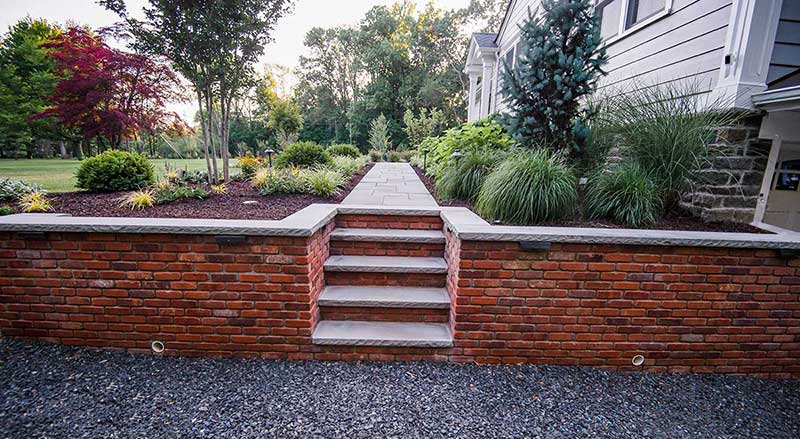
The construction of a retaining wall involves several steps, including planning, site preparation, foundation and footing construction, wall assembly, and drainage installation.
The basic steps involved in the construction of a retaining wall are:
1. Planning: Before construction begins, a detailed plan and design for the retaining wall should be created. The plan should consider factors such as soil type, slope angle, drainage, and local building codes.
2. Site Preparation: The area where the retaining wall will be constructed should be cleared of any debris, vegetation, or other obstructions. The site should be graded to create a level surface for the foundation and footing.
3. Foundation and Footing Construction: The foundation and footing for the retaining wall should be dug and constructed according to the design plan. The depth and width of the foundation and footing will depend on the size and height of the wall.
4. Wall Assembly: The retaining wall blocks, or other materials should be assembled according to the design plan. Each block or material should be leveled and secured with adhesive or other materials. Reinforcing materials such as steel bars or geogrid may be required to strengthen the wall.
5. Drainage Installation: Proper drainage is essential for the long-term stability and effectiveness of the retaining wall. Drainage pipes, gravel, and filter fabric should be installed behind the wall to prevent water buildup and soil erosion.
6. Backfill: Once the retaining wall is assembled and drainage is installed, the area behind the wall should be backfilled with soil or other materials. The backfill should be compacted in layers to prevent settling.
When building a retaining wall, it is important to consider factors such as the type of soil, the slope of the terrain, and the amount of water that will be flowing through the area.
It is also important to follow local building codes and obtain any necessary permits before starting construction.

Proper construction of a landscape retaining wall can improve the functionality and aesthetics of an outdoor space, while also preventing erosion and maintaining the integrity of the surrounding landscape.
Proper design, materials selection, and construction techniques are critical for the success of a retaining wall. It is recommended that the construction of a retaining wall be done by a licensed and experienced contractor.
Stay tuned for our next blog that will include a look at the retaining wall materials most often used in beautiful landscape design.

